Student Projects

Climate Change and Bird Species in Portland
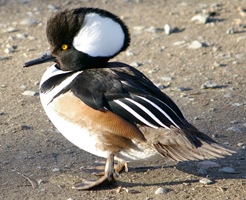 By using monthly average temperature data as a proxy of climate change we will be looking at ten bird indicator species to see how species composition has changed over a 30 year span in Portland, Oregon. This information will be used by bird enthusiasts, urban and city planners, and ecologists. Our presentation is available here as a prezi.
By using monthly average temperature data as a proxy of climate change we will be looking at ten bird indicator species to see how species composition has changed over a 30 year span in Portland, Oregon. This information will be used by bird enthusiasts, urban and city planners, and ecologists. Our presentation is available here as a prezi.
Future Water Availability of the Bull RUn Watershed
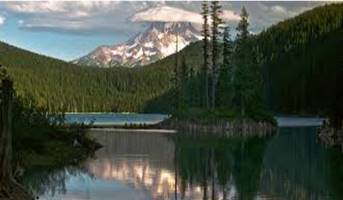 Portland is projected to reach almost a million residents by 2060, with a large uncertainty in the actual amount given the effects of climate change will have in regions with already less water and hotter temperatures than Oregon. In the same time period, snowpack will reduce by 20-30% due to increased temperatures, which will also alter precipitation patterns, stream flows, and percolation of water into the ground. These environmental and population differences have the potential to reduce water availability. There are promising trends in water usage where the average usage has dropped from 75 gal/person/day to just over 50 gal/person/day. The need for thorough planning for the future, even with the uncertainties of climate change, will make a big difference in how Portland adapts.
Portland is projected to reach almost a million residents by 2060, with a large uncertainty in the actual amount given the effects of climate change will have in regions with already less water and hotter temperatures than Oregon. In the same time period, snowpack will reduce by 20-30% due to increased temperatures, which will also alter precipitation patterns, stream flows, and percolation of water into the ground. These environmental and population differences have the potential to reduce water availability. There are promising trends in water usage where the average usage has dropped from 75 gal/person/day to just over 50 gal/person/day. The need for thorough planning for the future, even with the uncertainties of climate change, will make a big difference in how Portland adapts.
Climate Change and the Oregon Coast
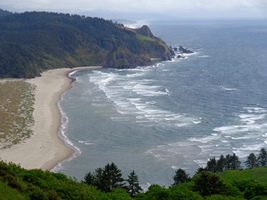 Current projections for sea level rise will affect communities on coastline around the world. Our groups research examined socioeconomic and biological challenges faced by Tillamook Bay, Oregon. Our target audience is Tillamook Bay residents, and other economic, biological and socioecological stakeholders.
Current projections for sea level rise will affect communities on coastline around the world. Our groups research examined socioeconomic and biological challenges faced by Tillamook Bay, Oregon. Our target audience is Tillamook Bay residents, and other economic, biological and socioecological stakeholders.
Sea Turtle Strandings Along the Oregon Coast
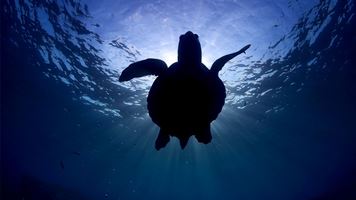 Increasing climate variability and warming ocean temperatures caused by climate change threaten endangered sea turtle populations, rising ocean sea surface temperatures tend to increase the rate of sea turtle strandings along the Pacific Northwest coast. This study aims to analyze the effect of rising ocean sea surface temperatures caused by climate change on the rate of sea turtle strandings along the Pacific Northwest coast of the USA. Our target audience are NOAA Fisheries, Oregon Coast Aquarium, Seattle Aquarium, marine sanctuaries of the West Coast, and the general public who are interested in these topics
Increasing climate variability and warming ocean temperatures caused by climate change threaten endangered sea turtle populations, rising ocean sea surface temperatures tend to increase the rate of sea turtle strandings along the Pacific Northwest coast. This study aims to analyze the effect of rising ocean sea surface temperatures caused by climate change on the rate of sea turtle strandings along the Pacific Northwest coast of the USA. Our target audience are NOAA Fisheries, Oregon Coast Aquarium, Seattle Aquarium, marine sanctuaries of the West Coast, and the general public who are interested in these topics
Tree Canopy Coverage and AQI
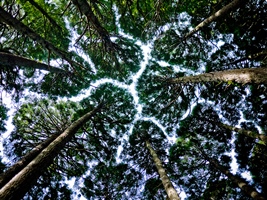 Understanding the relationship between air quality and land coverage can be important for informing and creating policies regarding urban growth, land use and other development decisions. Our group delved into this relationship by analyzing existing Air Quality Index data sets in Oregon counties publicly available and provided by the Environmental Protection Agency. For land cover we looked at forest canopy coverage as well as total percent developed land provided by the National Land Coverage Database. We used ArcGis as well as RStudio to look at the various relationships between the two data sets. Our results did not find any correlations of significance between the canopy cover and air quality, or percent of developed land and air quality at the county level within Oregon. Finally we recorded a presentation that is available for your viewing pleasure.
Understanding the relationship between air quality and land coverage can be important for informing and creating policies regarding urban growth, land use and other development decisions. Our group delved into this relationship by analyzing existing Air Quality Index data sets in Oregon counties publicly available and provided by the Environmental Protection Agency. For land cover we looked at forest canopy coverage as well as total percent developed land provided by the National Land Coverage Database. We used ArcGis as well as RStudio to look at the various relationships between the two data sets. Our results did not find any correlations of significance between the canopy cover and air quality, or percent of developed land and air quality at the county level within Oregon. Finally we recorded a presentation that is available for your viewing pleasure.
